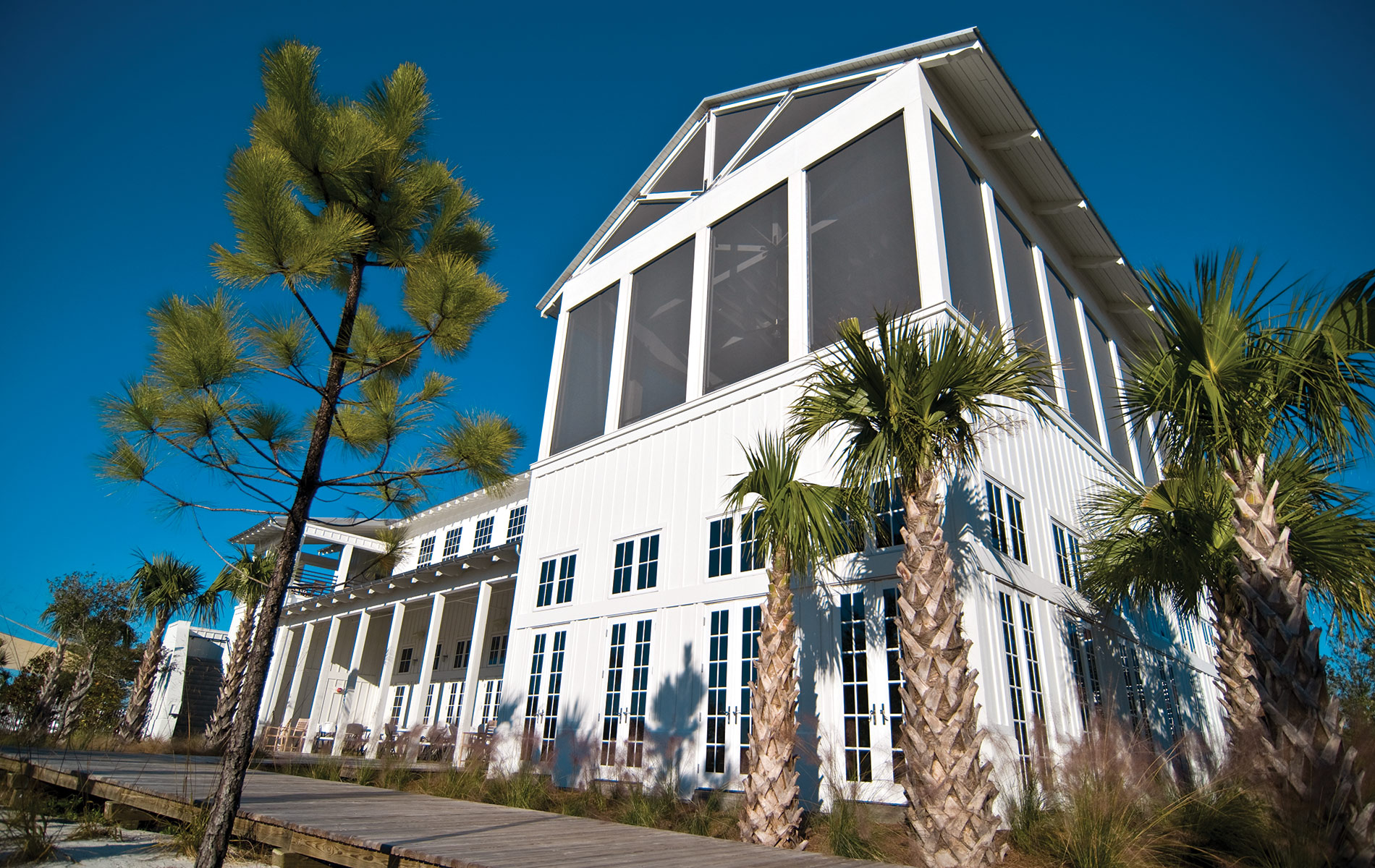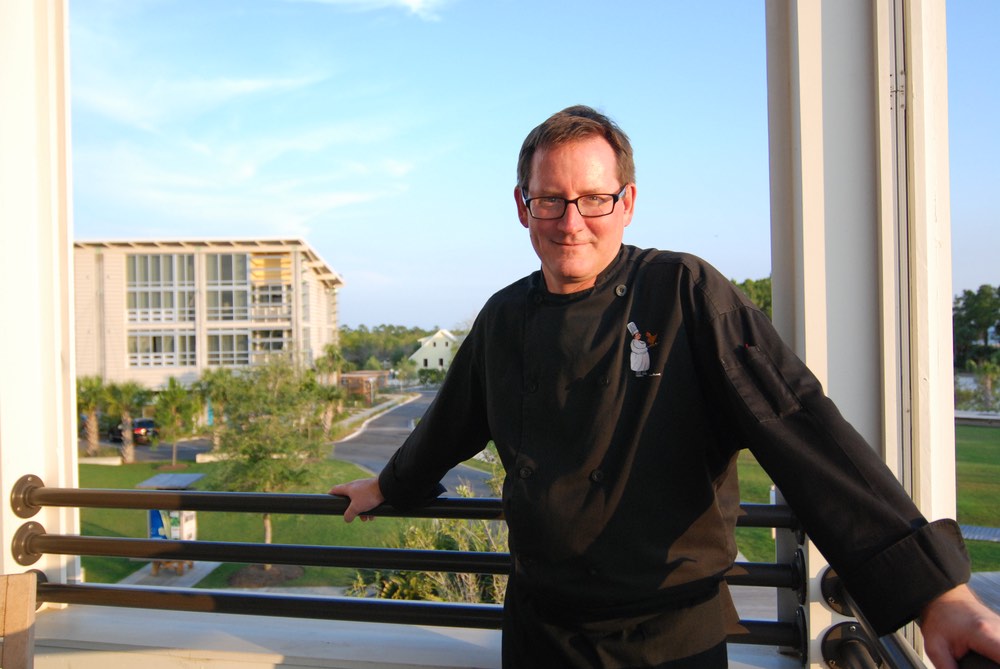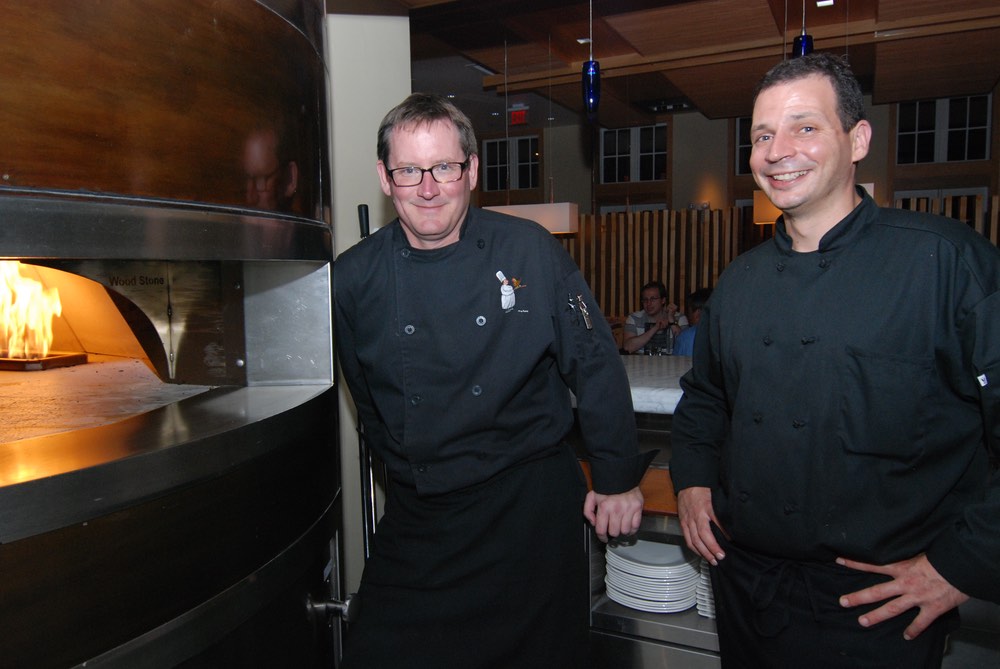
vie-magazine-great-southern-school
Great Southern School of Fish
Chef Jim Shirley Redefines “Fresh”
By Tori Phelps
Some scenes from childhood are indelibly etched in one’s mind, forever vivid and as real as the page in front of you. For chef Jim Shirley, it’s the feel of the sweltering summer sun and sting from bristly plants and unseen insects as he traipses through his grandmother’s farm in Georgia. The mission? Picking pounds of okra and bushels of crab apples—collecting his next meal, really. It’s a memory that’s sweet, despite the physical discomforts he can still clearly bring to mind. “I didn’t love collecting four bushels of crab apples and then cleaning them,” he says, “but the reward was the pie or jelly that could only be made with these sour apples.”
Of course, he didn’t realize it at the time, but these hazy, sometimes backbreaking, hours in the Georgia sun helped him to form the culinary point of view from which Shirley has operated for decades—long before the current trend toward organic, local eating was a talking point on the nightly news.
This self-proclaimed “forager of the Gulf Coast” has spent years painstakingly investigating the best local growers and fishermen to supply the restaurants he owns or co-owns with the Great Southern Restaurant Group: the Fish House and Atlas Oyster House in Pensacola and the Great Southern Café in Seaside. The latest addition to the lineup is the Great Southern School of Fish, located at the picturesque residential and resort community of WindMark Beach. The restaurant, an architectural marvel with twenty-foot ceilings and views that overlook sparkling blue water, juxtaposes a casual, family-friendly ambience with the high-energy vibe of an eatery that puts out exceptional food—and knows it.

Chef Jim Shirley | Photo by Gerald Burwell
His food has been tagged “modern Southern,” but Shirley shakes off that label as too narrow. He simply concentrates on infusing distinctive, even exotic flavors into dishes that his customers only thought they were familiar with. His signature Grits à Ya Ya are a prime example: smoked Gouda cheese grits smothered with a sauté of applewood-smoked bacon, spinach, shallots, garlic, Portobello mushrooms, and cream, and finished with spiced shrimp and sweet potato hay. They’re not exactly your mama’s grits, which may explain why they follow him from restaurant to restaurant. Shirley is honored—and slightly bemused—by the fact that his customers simply refuse to let him leave the grits off the menu at any of his establishments.
In addition to the luscious grits, the Great Southern School of Fish boasts fare such as “soul rolls” made with chicken and collard greens, tequila-spiked chicken wings, Southern takes on sushi (barbecue and BLT rolls, to name a couple), as well as a long list of fresh seafood that befits the restaurant’s name.
Shirley can’t remember a time when he didn’t earn a living through food. Beginning like many teens—as a burger flipper—he was already running a pizza joint by the time he was seventeen. He landed his first chef position at Jubilee in Pensacola Beach and soon afterward opened his first restaurant, Madison’s Diner (named after his daughter) in Pensacola.
No degrees from fancy culinary schools hang on his wall; instead, Shirley endured what he diplomatically calls “on-the-job training”—which translates to smacks from shrieking chefs and heavy pots hurled at him with alarming frequency. This quasi-violent but effective mentoring was standard in the early 1980s, and, by the time culinary schools came into vogue, both his reputation and his bank account were well established.
His food has been tagged “modern Southern,” but Shirley shakes off that label as too narrow. He simply concentrates on infusing distinctive, even exotic flavors into dishes that his customers only thought they were familiar with.
The superior skills he honed while ducking frying pans have earned Shirley national acclaim, a spot on the Travel Channel show Bizarre Foods with Andrew Zimmern and his own show, Chef’s Apprentice, in which he and his teenage nephew sift through the heritages of Pensacola settlers to uncover what they ate and how that legacy has influenced the Gulf Coast. “Some of the original settlers were Italian, Spanish, and Greek. We’re a product of the settlers of this area—of these cultures and the amazing seafood,” he proclaims.
Shirley is also the author of Good Grits! Southern Boy Cooks, which is based on his long-running Pensacola News Journal columns—inside glimpses of a chef’s travels and homemade re-creations of the excellent food he has encountered along the way. Of course, the book features the recipe for Shirley’s enormously popular Grits à Ya Ya, a secret he doesn’t mind sharing. “I’m not worried that my customers will skip my restaurants once they have the recipe in their hands. As a matter of fact, people in Pensacola say to me all the time, ‘Hey, I made the grits at home for my family’ right before they order them in my restaurant.”

Photo by Gerald Burwell
With restaurants, a newspaper column, a TV show, and a book to his credit, it may appear from the outside that his life as a chef is a glamorous gig. Shirley is quick to point out, however, that it’s not the cakewalk people see on the Food Network. “Sure, it’s nice to dice one onion; we dice five pounds of onions,” he explains. “So, before you think about becoming a chef because you really enjoy doing something in the kitchen, think about whether you want to do it for four hours.”
So far, the dirty details haven’t dampened his own enthusiasm. In fact, Shirley’s agenda is more jam-packed than ever, with a revamped version of his TV show—with higher production values, which he hopes will reach a broader audience—and, perhaps, another book on the horizon. But what really animates this perpetually cool-on-his-feet restaurant chef is talking about the Great Southern Restaurant Group’s newest venture: a farm of their own in Walton County. They’re leaving the actual farming to the pros, but Shirley and his foodie friends are able to direct the types of heirloom produce grown on the property. “We want to grow really unique things. Not things you haven’t heard of,” he clarifies, “but more diversity—the best-tasting eggplant you’ve ever had and zebra tomatoes, for example. I want the Gulf Coast to be like Napa, where every restaurant has its own unique salad because there are 180 different types of tomatoes grown there.”
Northern Florida the next Northern California? If anyone can make it happen, it’s the forager of the Gulf Coast.
— V —
Share This Story!
KEEP UP WITH THE LATEST STORIES FROM VIE
















































































































































